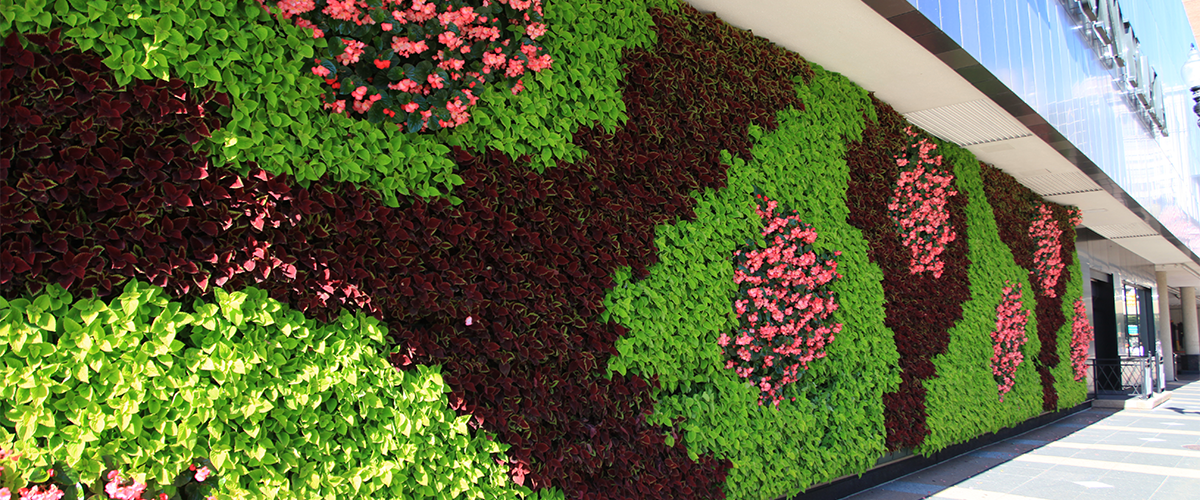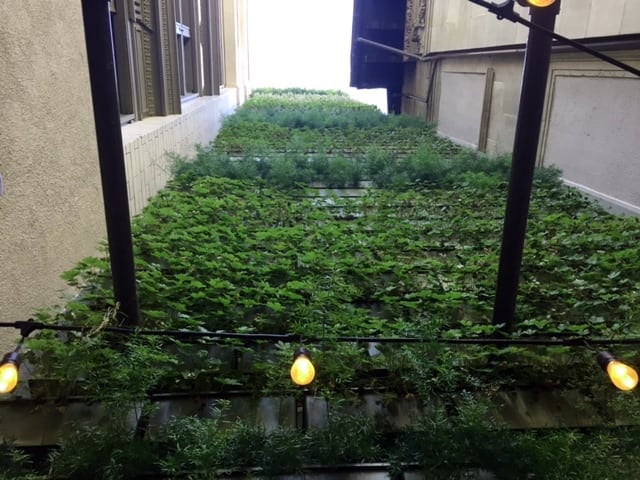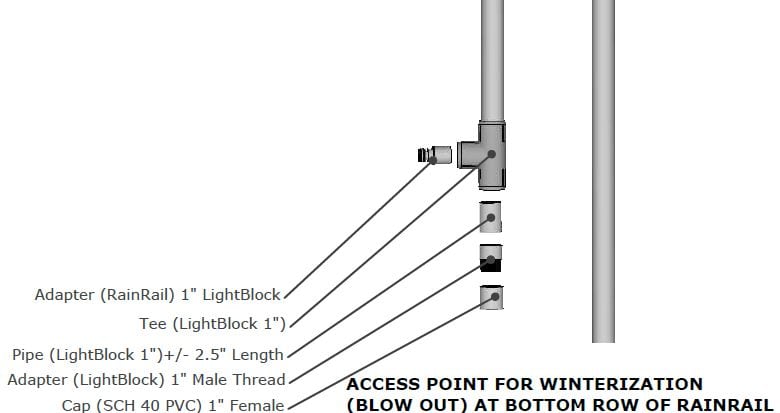Outdoor Living Walls

LiveWall empowers building owners, contractors, and design professionals to grow healthy exterior living walls.
Grow beautiful and functional wall gardens with LiveWall® Outdoor, the vertical garden system which provides a healthy growing environment for plants in virtually any climate.
Building owners construct outdoor green walls because they are excellent marketing tools that signal environmental stewardship, cool buildings, expand usefulness, attract songbirds and pollinators, and promote healthier, happier residents, customers and employees.
To overcome the challenges of growing plants accustomed to a horizontal landscape in a vertical garden, LiveWall simulates a natural growing environment with natural orientation, effective drainage, and rain-like irrigation.
Additionally, LiveWall uses the highest quality components that can stand up to the elements, such as UV-resistant molded planters and anodized aluminum rails. Removable planter inserts make LiveWall the practical choice to grow a wide variety of plants.
Frequently Asked Questions about LiveWall Outdoor
When installing living walls indoors, water containment is critical:
- The wall planters are rear-draining, and would include a rubber hose drain assembly to contain runoff water.
- The indoor wall planters hold twice the soil volume as the standard outdoor wall planters to provide ample growing space for a wide selection of tropical plants.
In outdoor green wall applications, the designer has more options for planter size, drainage method and water delivery.
- Large wall planters (recommended in hot climates and for holding larger perennials and grasses in cold climates) are available with a bottom drain or a rear drain option (when runoff water must be contained, such as over doorways or windows). These are spaced 16″ on center vertically.
- Standard wall planters have a bottom drain option, and are most commonly used with annuals, edibles, succulents, and a number of cold-winter hardy perennials.
- Choice of spray nozzles (typically recommended for outdoors), or drip irrigation (when site is sensitive to runoff from the plants).
Functionally, LiveWall can be placed as high as your building infrastructure, plumbing, and ability to access it for maintenance will allow. It is up to the discretion of the Owner/Architect/Engineer as to the appropriateness of the system at any given height, with all health, safety, and environmental factors to be considered.
Keep in mind that the taller the building, the more substantial the wind forces, particularly upward lifting wind forces. We recommend the use of limiting screws and our proprietary WindClip™ on living wall planters mounted more than 20′ from ground level. In regions prone to hurricanes or other high wind storms, we recommend using WindClips and limiting screws on all planters.
For more information, consult our engineering section.
On outdoor walls, the higher up you go, the windier the conditions tend to be, and you will get more evaporative drying. To compensate for this additional loss, adjust to run the irrigation longer on the upper zones. You can expect to lose about ½ PSI of pressure per each foot of elevation. This corresponds to about ½ PSI for each tier of the LiveWall system and on very tall walls, booster pumps may be needed to sustain pressure. Plumbing should be sized and engineered accordingly.

In northern climates, deactivate the system in fall by blowing out the irrigation lines with compressed air, not to exceed 20 psi, and turning the irrigation controller off. Empty lines and valves are required to avoid freeze thaw damage, so this needs to be done before the first hard freeze of the system.
After blowing the system out, the rain may effectively water the top few rows, and keep it moist until freezing occurs. But, the lower levels can still dry out and should be monitored and kept moist unless frozen.
It is not uncommon to need to irrigate a few times during wintertime warm ups. If needed, you can water with a hose and hand-held sprayer or use the built-in system, then blow it out afterward until the danger of freezing has passed.
Important
If you have perennial plants, throughout winter, the soil should be checked during periods of thawing to ensure proper moisture. The soil should be moist, not wet or boggy, or dry, whenever the soil is not frozen solid.
Warm Climate
In climates with warm winter weather, irrigation will need to continue throughout the winter. Less water is typically required during the coldest months. Follow the LiveWall irrigation chart to adjust the run time and frequency as the temperatures change.
In the event of an occasional freeze, it is important to blow out the irrigation lines an prevent cracks and leaks, and reactivate the system as the weather warms and plants dry out.

Important
Your outdoor living wall’s irrigation system may need to be blown out and reactivated multiple times during the winter months to sustain perennials.
Cold Climate
To sustain perennial plants through the winter, the soil must not excessively dry out. The plants in the living wall will not receive sufficient moisture from rainfall due to its vertical nature, and because the planters are exposed, the plants will enter dormancy earlier than the plants in the ground will. Therefore, you will likely need to water your perennial plants before the danger of freezing has passed and typically much sooner than you begin irrigating your at grade landscape.
- If the application is planted with perennial plants and it is large, or commercial scale, activate the system as needed – but do so only on warm days where water can flow and drain freely, and only enough to remoisten dry soil. The irrigation system will need to be blown out after each use until the danger of freezing has passed.
- If the application is small scale, then wintertime watering can be implemented as indicated above, or simply by using a hand held hose or watering can as the weather necessitates.
The infrastructure of the LiveWall system can be installed in every season, with some caveats:
- The irrigation system should not be activated at temperatures at or below freezing. Thus, the irrigation system will need to wait to be tested until temperature climbs above freezing.
- Nozzles should not be installed until the irrigation system has been tested and run to flush out any debris introduced during the installation.
- Generally, plants should be not be installed during winter. We recommend that they are held at the nursery until the spring.
To minimize installation time, please familiarize yourself with the installation instructional video.
Vertical garden plants will be damaged or killed by deicing chemicals. If the living wall is near walkway areas that are shoveled, use care to throw the snow in another direction as it may contain deicing agents.

